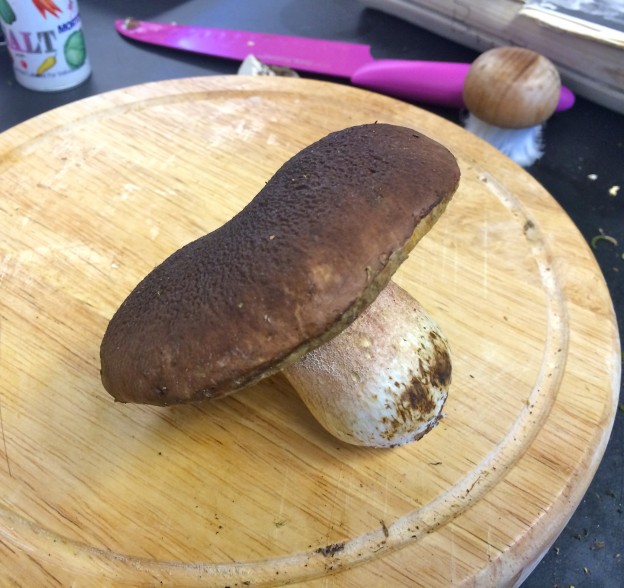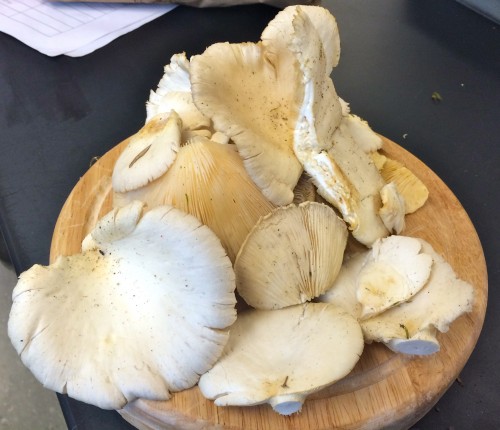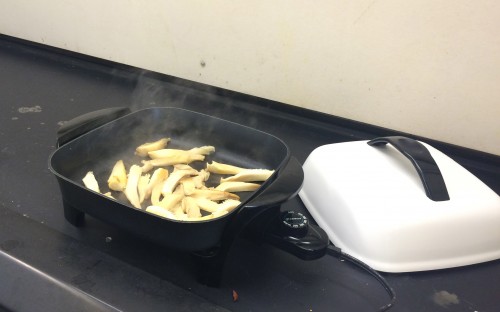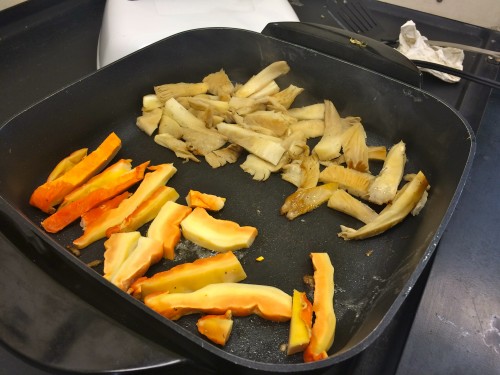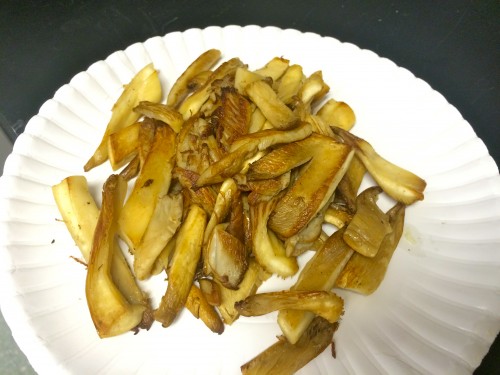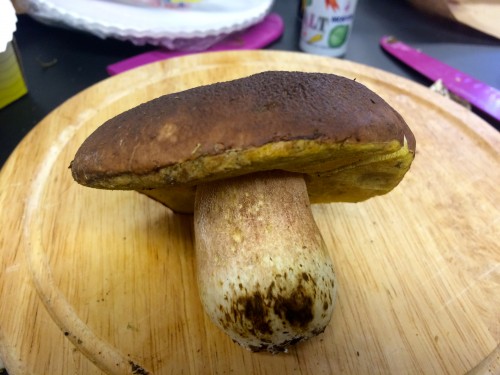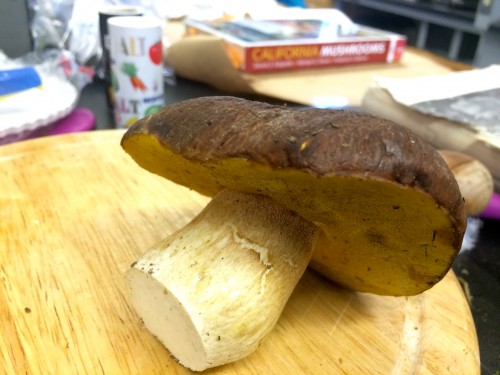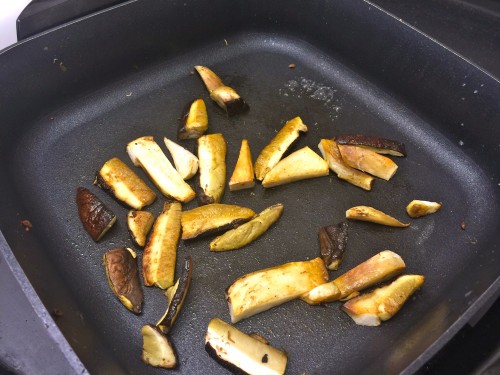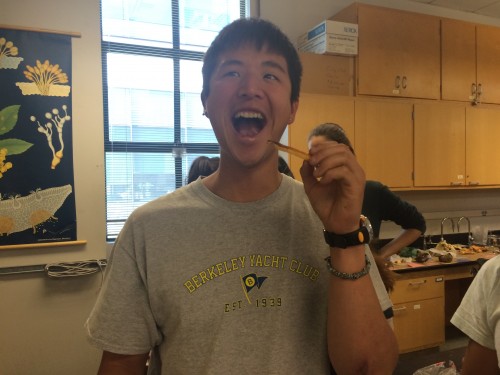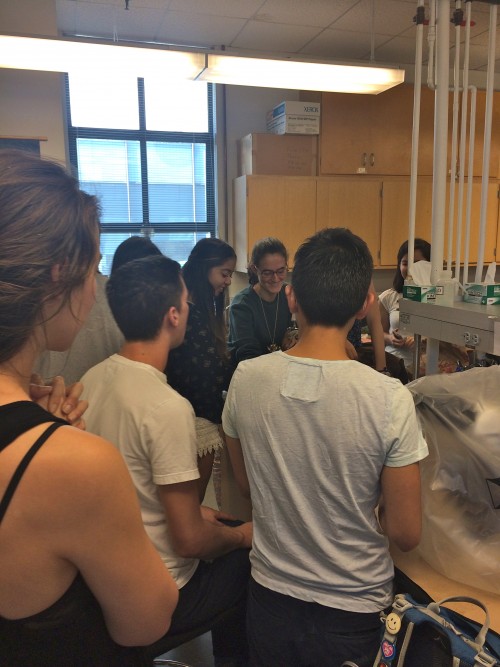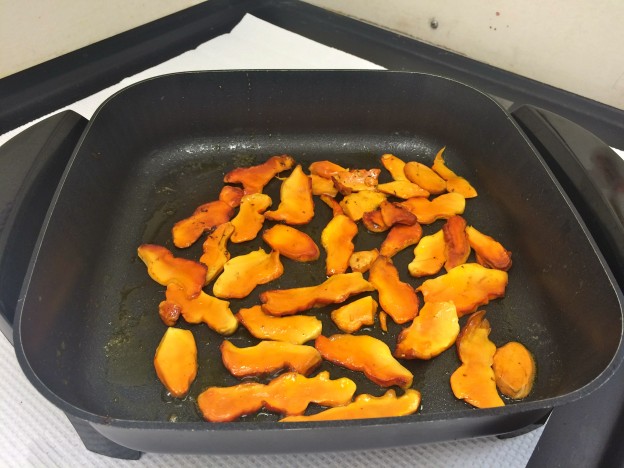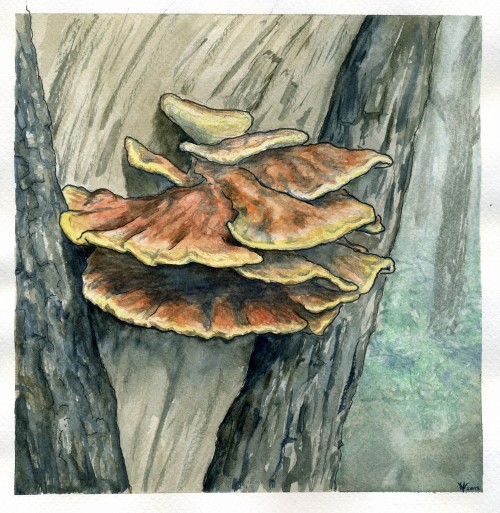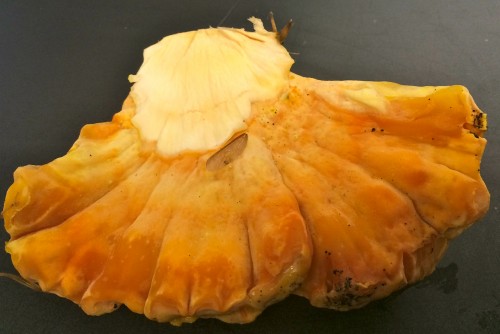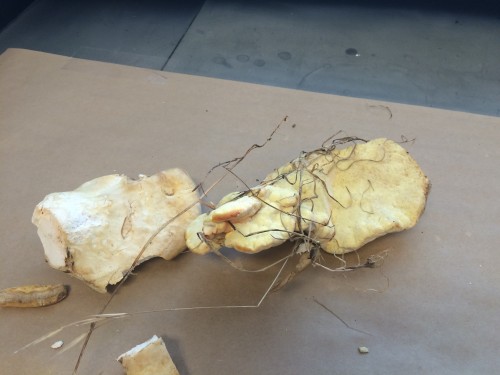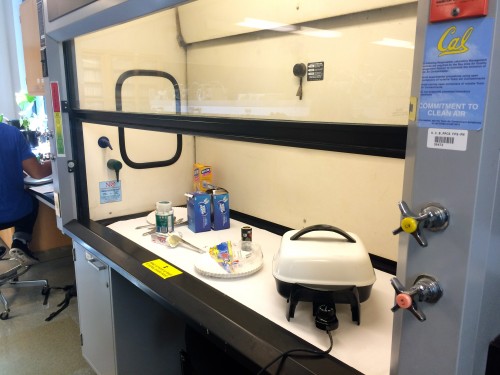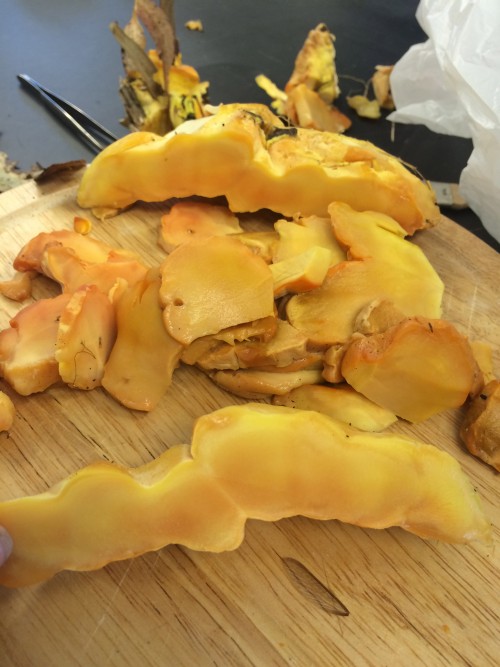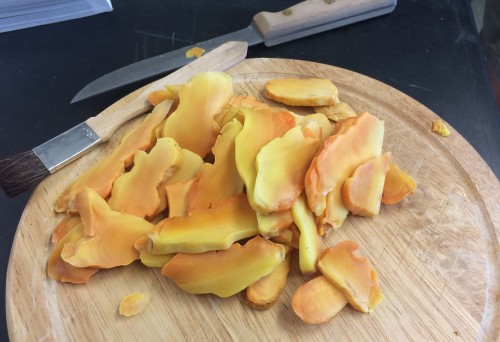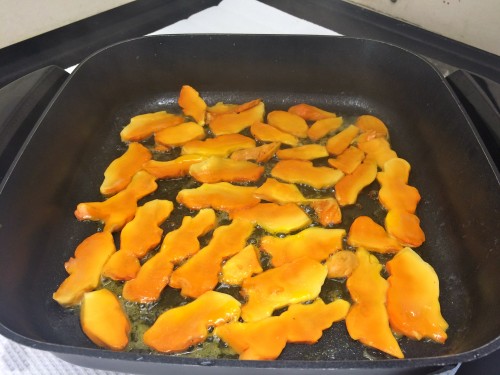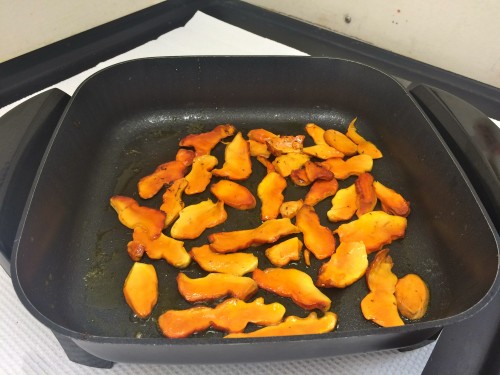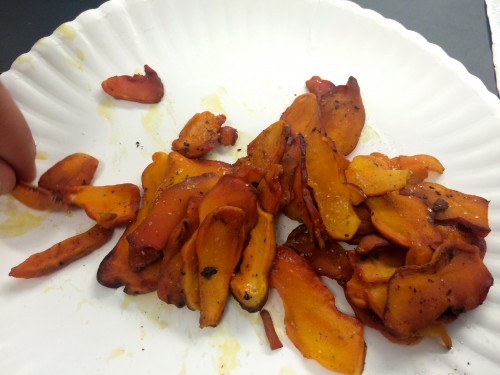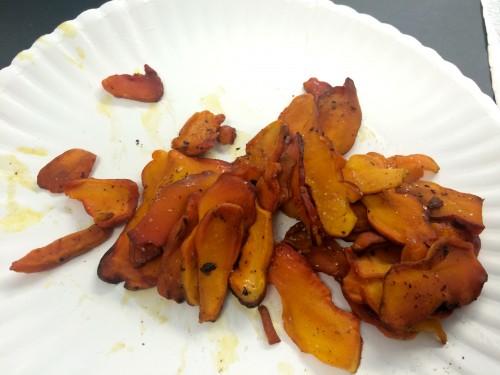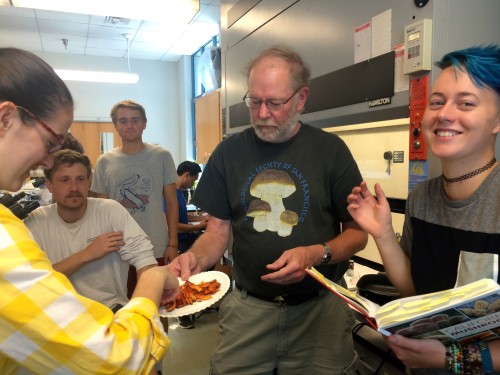Despite the extensive drought in California, some prized edible mushrooms are sneaking their way into my classroom. As mentioned in a previous post, I’m teaching a class at UC Berkeley this semester called California Mushrooms. Students bring in mushrooms that they find hiking around the local forests or on campus, and we identify them in lab. Imagine my delight when this giant pile of oyster mushrooms walked into my classroom a few weeks ago!
Whenever we get a sizable collection of edible mushrooms in the classroom we cook them so that all of the students can try them. Oyster mushrooms, also known as Pleurotus ostreatus, are not necessarily the most prized mushrooms because they are not that scarce. Unlike chanterelles and porcinis, which are ectomycorrhizal fungi and are mutualistically associated with trees, oyster mushrooms are saptrophic fungi that make a living by decaying dead material such as wood. This is an easy environment to reproduce in culture so oyster mushrooms are cultivated and thus readily abundant. You might have seen them in your local grocery store. Or you might be seeing them on downed logs while hiking around in the forest, which is where my student found them in the woods in Marin county.
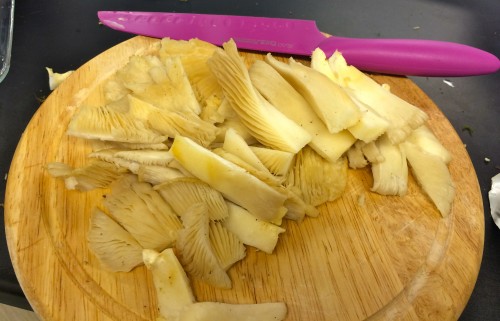
We cleaned and sliced up the mushrooms and prepped them on our handy wooden cutting board in lab. As you saw in the chicken of the woods post, we have a set up where we bring in a portable hot plate and cook mushrooms in the fume hood.
We like to cook the mushrooms simply in butter and add salt so the students can taste them in their purest element. I do enjoy oyster mushrooms but I will admit that they are not the most flavorful. However, oyster mushrooms would add great texture and meaty flavor to a stir fry or an egg dish.
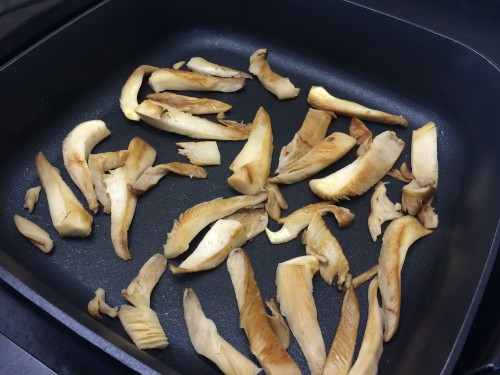 Chicken of the woods, which I wrote about in my last post, has been coming in a lot as well as it is a common parasite of Eucalyptus trees on campus and in Albany and Berkeley. Since they are so tasty and were such a hit in the previous class, we decided to cut those up and cook them as well.
Chicken of the woods, which I wrote about in my last post, has been coming in a lot as well as it is a common parasite of Eucalyptus trees on campus and in Albany and Berkeley. Since they are so tasty and were such a hit in the previous class, we decided to cut those up and cook them as well.
Don’t they add a lovely color? Here are the oyster mushrooms all cooked up. You can see we use pretty fancy flatware in class…
Now of course the students love trying all new mushrooms but I was especially excited when we got our first porcini! Alas it was only a single mushroom that was found by one of the students hiking around in Mendocino, but I had to cut it up for students to try since it is such a prized edible.
Porcinis are ectomycorrhizal fungi, mutualistically associated with trees, so they must be foraged in order to find them because it is a really difficult environment to recreate in culture. Many mushrooms in the genus Boletus are lumped into the edible category of porcinis, but the one that we had in class was the queen bolete Boletus regineus known for the white bloom she has on her cap when young. Mushrooms in the genus Boletus are distinctive for having tubes instead of gills. Remember my post about hedgehog mushrooms where I mentioned that mushrooms in the genus Hydnum have spiny teeth instead of gills? Mushrooms have evolved all sorts of awesome mechanisms for dispersing their spores!
Porcinis are identifiable due to the brown bun shaped caps, the tubes, and the reticulation, or netting, on the top of the stem. Can you see it? As I mentioned previously, porcinis are a rare find and are super delectable so I was very excited to cook it in class.
As usual, we kept it simple cooking it in the frying pan with butter and salt. Porcinis are delicious in egg dishes, gravy, soups, many Italian dishes, and would likely add a rich buttery flavor to any dish. They were super buttery and delicious! Here’s my co-TA Vince enjoying mushrooms in our lab.
Here are the students gathering round to try the mushrooms! Bon apetit!

